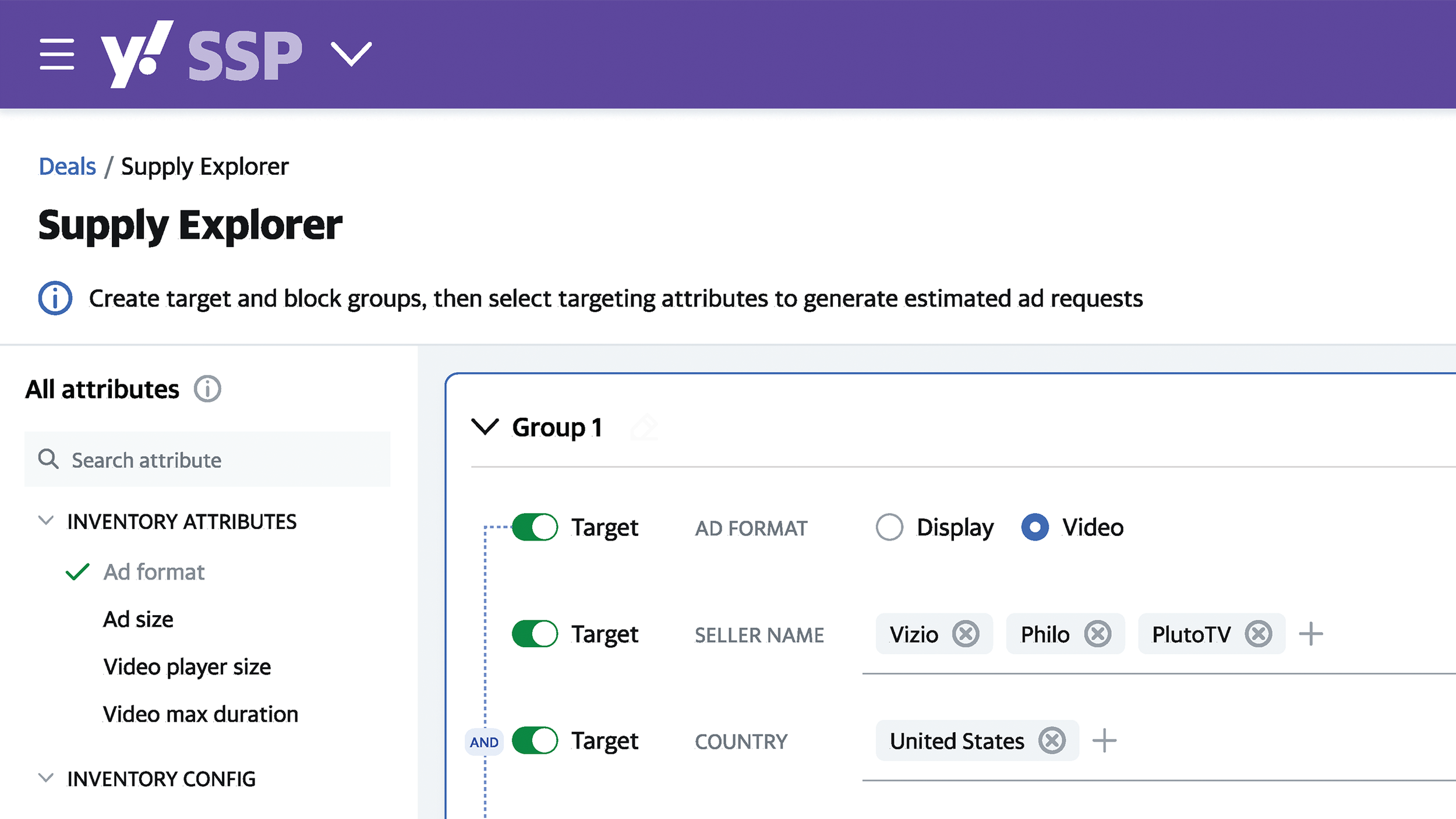Reinventing Deals
In the ad tech industry, "deals" refer to pre-negotiated agreements between advertisers and publishers that enable the buying and selling of ad inventory at a fixed price. Deals can be private or public, and they often offer higher quality and more targeted inventory than what is available in the open market. In the programmatic world, a deal is much more complex than a handshake over a business lunch. That might be where it begins, but let me show you where it ends.
THE SETTING
Within the Yahoo Supply Side Platform (SSP) one will find three main areas of focus:
Sellers & Placements
Rules
Deals
After a publisher sets up their account and defines their ad inventory, they will create Rules to limit the types of ads they allow to control brand safety. The goal then becomes all about attracting advertisers to their apps & sites. For most, this traffic is managed programmatically through Real Time Bidding (RTB) on our ad exchange. However, a significant portion (+20%) of premium ads are managed through Deals. For CTV, OTT & DOOH, this figure jumps to 80%. Roughly 500 new deals are created each month.
THE CHARACTERS
A wide variety of business teams access the SSP and the Deals UI as part of their daily routine. User personas fall into these main categories:
Internal / External Account Managers
Publisher / Advertiser Sales Managers
Publisher Yield Team
Deals Team
Each group is focused on different aspects of deals. Sales are looking for deal opportunities. AM’s are maintaining account performance. The Yield team is fine tuning the settings to generate maximum revenue, and the dedicated Deals team is in the dirt creating the actual deal on the platform using the UI.
THE CONFLICT
Due to the complexity of the task, the disparity in publisher systems, and the potentially devastating legal and revenue impacts, only a select group of users have keys to the deal creation / editing tools. This makes the team over-worked and highly stressed. Some employees have quit due to the pressure. The UI became bloated over time from platform mergers and feature-stuffing to accommodate all customers and all emerging platforms (see Yahoo Brand Evolution).
While “Self-Serve” deals were the ultimate vision, the risk was too high to flip that switch without some major overhauls to the backend systems running deals.
“I create a deal, turn it on, and pray that it will work”
- Deals Team member
THE BIG IDEA
“By using Machine Learning, anyone can create an accurate deal in a fraction of the time.”
This became the mantra of the “Big Deals” team that consisted of roughly 80 employees across Product, Engineering, UX, Research, and representatives from all user groups. Beginning with an off-site summit to determine the pain points (there were many), the team determined that the core problem was that the backend was relying upon the user to do its job.
The system had to be rebuilt so the core logic was changed from an inventory selection process by the user, to an attribute selection process that the backend accurately interpreted. With Machine Learning, the system would only improve over time as it scaled.
THE RESOLUTION
An Attribute-based solution was designed whereby the user would select the type of inventory the deal would target rather than the specific inventory itself. This would allow deals to dynamically update as new inventory became available, and it would catch inventory a human would likely miss.
For example, if a CTV advertiser wished to advertise on “The Walking Dead” series, the Deals team user would need to be certain they were targeting all known publisher variations of the show. AMC might name it “The Walking Dead”, but Netflix might name it “TWDS01”. Next year another publish might appear with the name, “The_Walking_Dead”. We needed to develop a backend system that was smart enough to catch all inventory now and in the future.
THE RESULTS
The project is ongoing, but a proof of concept with three main attributes has been built and verified to work. The next step is to add 17 attributes (eg, Seller, Ad Type, Content Rating, etc) allowing for 80% of all deals to be generated. Ultimately 33 attributes will be added covering 100% of all deals. At this time, all old deals will be converted to the new system.
Moving forward, Machine Learning is expected to decrease the current time it takes to create a deal from 14 days today to only a few hours. Deal troubleshooting is expected to be reduced from the current 23 day average to 2-3 days. In addition, the need for troubleshooting will be drastically cut as deal transparency increases. Revenue will increase 10% at a minimum due to the increased inventory capture over time. User satisfaction will undoubtedly increase as deal accuracy and efficacy increases.





